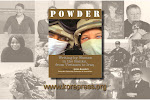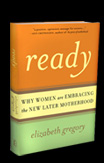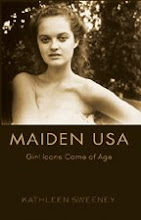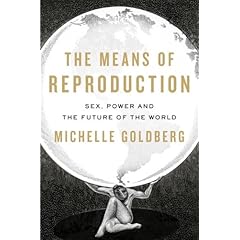
/* Style Definitions */
table.MsoNormalTable
{mso-style-name:”Table Normal”;
mso-tstyle-rowband-size:0;
mso-tstyle-colband-size:0;
mso-style-noshow:yes;
mso-style-parent:””;
mso-padding-alt:0in 5.4pt 0in 5.4pt;
mso-para-margin:0in;
mso-para-margin-bottom:.0001pt;
mso-pagination:widow-orphan;
font-size:12.0pt;
font-family:”Times New Roman”;
mso-ascii-font-family:Cambria;
mso-ascii-theme-font:minor-latin;
mso-fareast-font-family:”Times New Roman”;
mso-fareast-theme-font:minor-fareast;
mso-hansi-font-family:Cambria;
mso-hansi-theme-font:minor-latin;
mso-bidi-font-family:”Times New Roman”;
mso-bidi-theme-font:minor-bidi;}

For those who care about the po’ biz, as the “business” side of the poetry world is sometimes called, the details of who gets published, how, when, and why, often seem to be of utmost significance. Although this might be a small subset, it’s heartening to see how many others are tracking and fighting for better gender parity within publishing now. And for those who like to dig into gender theory, especially the exploration of what Helene Cixous coined “l’ecriture feminine,” it’s gratifying to know these debates are still active. Finding a book that addresses all of these issues serves not only as an exemplar of hybridity but also as a daring act of new publishing practice.
Feminaissance: A Book of Tiny Revolts, edited by Christine Wertheim, just out from Les Figues Press, serves all these purposes. For one, it acts as a journal from the conference of similar name (Feminaissance: A Colloquium on Women, Writing, Experiments, and Feminism) held in 2007 at The Museum of Contemporary Art (MOCA) in Los Angeles. For another, it offers not only innovative writing from intriguing poets, but each offers commentary about what it means to be a woman writing now. Some essays grapple with Cixous’s idea of l’ecriture feminine and what it means to “write as a woman”; some offer a meta-level response through the work itself.
“Another anthology of women’s writing!” is how Wertheim wryly starts out her dedication, followed by the inevitable rhetorical question, “Don’t we live in a post-gendered, post-subjective age where isolating the work of specifically defined groups is outmoded?” Her answer comes in the book’s subtitle, taken from contributor Dodie Bellamy’s piece that “grand revolutions are passé” but, as Bellamy writes, “tiny revolts” are still necessary. Wertheim offers that this book is meant to serve as a “display of the many different avant-garde experimental, innovative and conceptual modes that women themselves conceive.” Issues explored include “whether there can be specifically ‘feminine’ forms of text; the economic position of women as writers in the academy and marketplace; mothers, real, symbolic, and imaginary; questions of aesthetics and representation in relation to women’s work” and more.
While all of these questions are vital, and the work of Les Figues is both exciting and crucial, the volume itself requires either a natural ADD-like ability to accrete meaning from scattered forms, or earnest retraining in how to read a text, an admirable challenge, but one that most readers are not likely to bother with. I applaud the subjects addressed in this volume, and the quality of deep thought that most (but not all) offer in their responses, but the material book’s construction, an act of innovative publishing, made it difficult to absorb the texts.
Each page in Feminaissance is divided into three sections, with the author identified in a tiny vertical byline in the page’s margins. Until I caught on to this, I kept trying to read down the page, puzzled by the glitches in sequence. As the publishers and editor write in the forward this allows for “multiple reading strands on each page” and “uses the space of the page as a visual arena for a public conversation.” By allowing, as they write, for “multi-vocality” they enable different styles of reading, both discursive and narrative as well as, they write, and “a more poetic meditation.” I admire this, but also found it detracted from the power of the authors.
The contribution most compelling to me is one that rippled before the book came out, stirring new controversy into a sadly evergreen debate. The essay “Numbers Trouble” co-written by Juliana Spahr and Stephanie Young was published, post-conference, in the Chicago Review. Their essay was a response to a previous article (Jennifer Ashton’s “Our Bodies, Our Poems” published in American Literary History) which contended, (in brief summary), that gender parity is no longer an issue within publishing, writing programs, etc., and that commitment to a “notion of difference” is essentializing and regressive. Spahr and Young confront Ashton’s notions of parity by literally counting pages and the result is dismaying. Things are, in fact, worse than they thought in terms of female representation in literary journals. (Much of this debate, including Ashton’s rebuttal, is collected at this site by scrolling down to “Gender.”)
When they published their essay the poetry world bristled at claims of sexism. I find their research admirable and their outrage constrained, given their findings. The essay authored just by Spahr (“Gender Trouble” a nod to Judith Butler’s book) is also a lucidly sobering recounting of gender performance and politics inside the creative writing program Spahr attended from 1989-1995, with its concomitant issues of power around gender representation within academe, (“the heroic male literary tradition”) mentorship and publishing, and then, full circle, who gets hired to start the cycle over again. Spahr and Young’s essay canvasses the whole of the book, in a two-line couplet-like form that looks like a running headline. Intrigued, I paged onward almost as if gleaning a story from a flip book, but couldn’t take in their whole meaning until I printed the essay whole.
The mix of poems included is admirable, although some are less successful than others. I found Wanda Coleman’s poem “Rape” (which I heard her read at the LACE book party) to be baffling to comprehend in tone. The essay by poet Tracie Morris (“Embracing Form: Pedagogical Sketches of Black Women Students Influenced by Hip Hop”) was especially interesting for its intersectional address of race and gender, as well as interplay of music and poem, with reference to contemporary performing artists and her breakdown into “craft specifics.” Some of the more innovative styles, such as work by publisher Vanessa Place, and certainly, editor Christine Wertheim’s visual poems, are an acquired taste, undoubtedly most appreciated by those fully engaged in avant-garde aesthetics. I had the pleasure of hearing Wertheim “read” one of her poems at the book’s debut and her vocalizations were astounding, but without this rendering, the poem’s dimensionality on the page loses a reverberation of meaning.
“Where are the Whitmans? The Steins?” asks Lidia Yuknavitch in an epigraph. This is a book ripe for a graduate school classroom and I wished I had a cohort of poets and academics to hash through it with, particularly to discuss the issues raised around gender identity, essentialism, and how l’ecriture feminine can be understood currently, nevermind is bounded by race, class, and other markers. It is successful in drawing attention to critical issues, both theoretical, aesthetic, and practical, about women’s writing. What it is not is easy to absorb, something I don’t think its editor or contributors will mind in the least.









 My thoughts have very much been with
My thoughts have very much been with 


















 If I could think of a topic that travels around the conversations of most women I know, the choice to have a child, and when, often lives pretty near the top of the list. Following it comes a litany of concerns: how to juggle career, partnerhood, personal and professional ambitions, and more.Â
If I could think of a topic that travels around the conversations of most women I know, the choice to have a child, and when, often lives pretty near the top of the list. Following it comes a litany of concerns: how to juggle career, partnerhood, personal and professional ambitions, and more. 



 We’re pleased to bring you another cross-post from our friends at Feminist Review. In this week’s edition, Sarah Eve Nichols-Fulghum reviews Michelle Goldberg’s The Means of Reproduction. –Kristen
We’re pleased to bring you another cross-post from our friends at Feminist Review. In this week’s edition, Sarah Eve Nichols-Fulghum reviews Michelle Goldberg’s The Means of Reproduction. –Kristen